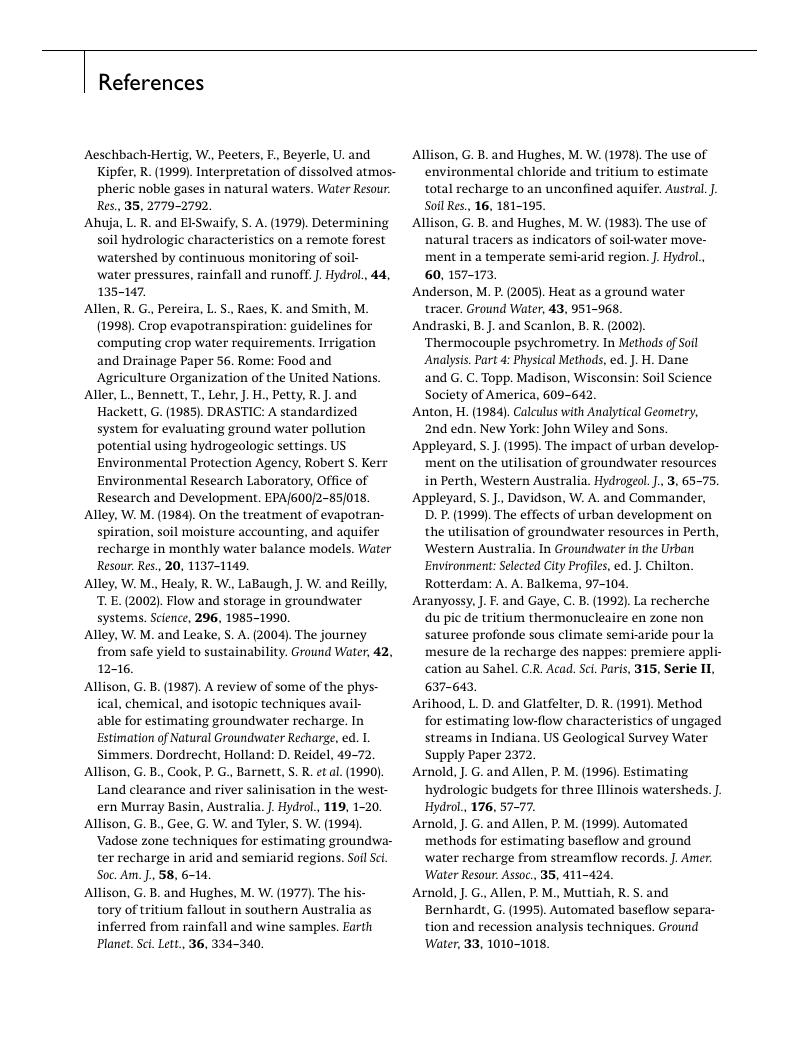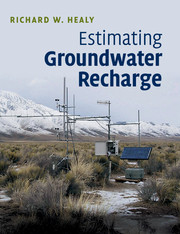Book contents
- Frontmatter
- Contents
- Preface
- Acknowledgments
- 1 Groundwater recharge
- 2 Water-budget methods
- 3 Modeling methods
- 4 Methods based on surface-water data
- 5 Physical methods: unsaturated zone
- 6 Physical methods: saturated zone
- 7 Chemical tracer methods
- 8 Heat tracer methods
- 9 Linking estimation methods to conceptual models of groundwater recharge
- References
- Index
- References
References
Published online by Cambridge University Press: 05 April 2013
- Frontmatter
- Contents
- Preface
- Acknowledgments
- 1 Groundwater recharge
- 2 Water-budget methods
- 3 Modeling methods
- 4 Methods based on surface-water data
- 5 Physical methods: unsaturated zone
- 6 Physical methods: saturated zone
- 7 Chemical tracer methods
- 8 Heat tracer methods
- 9 Linking estimation methods to conceptual models of groundwater recharge
- References
- Index
- References
Summary

- Type
- Chapter
- Information
- Estimating Groundwater Recharge , pp. 205 - 238Publisher: Cambridge University PressPrint publication year: 2010

